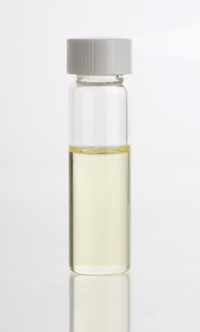
Photo from wikipedia
Abstract Essential oils (EOs) have found applications in many industries, including the development and production of botanical insecticides. However, little information is available about the effect of post-application temperature on… Click to show full abstract
Abstract Essential oils (EOs) have found applications in many industries, including the development and production of botanical insecticides. However, little information is available about the effect of post-application temperature on the insecticidal efficacy of EOs. This study therefore explores the effect of temperature on the insecticidal efficacy of an essential oil (EO) obtained from Thymus vulgaris and its major constituents – thymol, p-cymene and carvacrol, constituting 60.2%, 19.9% and 10.3% of the EO, respectively – in terms of acute toxicity against the larvae of Spodoptera littoralis and Culex quinquefasciatus. As shown by a comparison of lethal doses, the lethal doses significantly decreased with rising temperature upon topical application of the EO against S. littoralis larvae, with LD50 at 15 °C and 30 °C estimated as 52 and 32 μg/larva, respectively. Thymol (LD50 = 31 and 19 μg/larva, for 15 °C and 30 °C, respectively) and carvacrol (LD50 = 73 and 41 μg/larva, for 15 °C and 30 °C, respectively) exhibited similar effects. The opposite effect was found upon EO application to the larvae of C. quinquefasciatus, with LC50 = 19.3 and 24.4 μg L−1 for 15 °C and 30 °C, respectively. Just like the EO, thymol and carvacrol exhibited significantly higher efficacy at the lower temperature. LC50 at 15 °C was estimated as 16.9 and 19.4 μg L−1, and at 30 °C it was estimated as 33.9 and 27.1 μg L−1, respectively, for thymol and carvacrol. The effect of temperature on the efficacy of p-cymene was minimal. As shown in this study, the EO from T. vulgaris exhibits a significant positive as well as negative gradient of toxicity depending on the application mode.
Journal Title: Industrial Crops and Products
Year Published: 2018
Link to full text (if available)
Share on Social Media: Sign Up to like & get
recommendations!